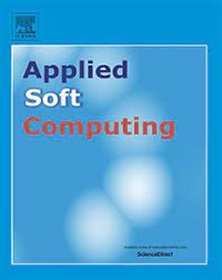Multi-agent modeling for indoor fire risk prediction during evacuation based on cellular automata and artificial neural network
IF 7.2
1区 计算机科学
Q1 COMPUTER SCIENCE, ARTIFICIAL INTELLIGENCE
引用次数: 0
Abstract
Fire cases have always posed threats to human lives and property safety, and new approaches have been developed to investigate how people behave during the fire process. Understanding the underlying mechanism under specific scenarios and conditions is critical to find possible ways of reducing social losses. Here, we propose a coupled model that combines FDS and CA, to assess fire risks in a multi-story dormitory building at a university. For this real target case, the settings of automatic sprinklers and temperature alarms will be considered in our coupled model. The aim is to investigate how pedestrians behave under the fire emergencies and how fire safety facilities (exits) shape final evacuation outcomes. To analysis the final outcomes and related factors, we use Event Tree and BP neural network methods to assess and predict individual risk levels. It suggests that controlling the number of people in each dormitory will effectively reduce the fire risk, and the existence of safety facilities can significantly contain fire risks. Early fire warning systems and quick response times are critical to reduce casualties during the evacuation process. Individual risk levels can be efficiently calculated by Event Tree method, and BP neural network can accurately predict fire risk levels. By integrating technologies such as FDS, CA, ETA, and BP neural networks, our model can effectively simulate the dynamic process of the fire evacuation while accurately predicting the fire risks, which establishes an effective link between environmental factors and fire risk assessment. This provides a methodological reference for future fire risk assessment research.
求助全文
约1分钟内获得全文
求助全文
来源期刊

Applied Soft Computing
工程技术-计算机:跨学科应用
CiteScore
15.80
自引率
6.90%
发文量
874
审稿时长
10.9 months
期刊介绍:
Applied Soft Computing is an international journal promoting an integrated view of soft computing to solve real life problems.The focus is to publish the highest quality research in application and convergence of the areas of Fuzzy Logic, Neural Networks, Evolutionary Computing, Rough Sets and other similar techniques to address real world complexities.
Applied Soft Computing is a rolling publication: articles are published as soon as the editor-in-chief has accepted them. Therefore, the web site will continuously be updated with new articles and the publication time will be short.
 求助内容:
求助内容: 应助结果提醒方式:
应助结果提醒方式:


